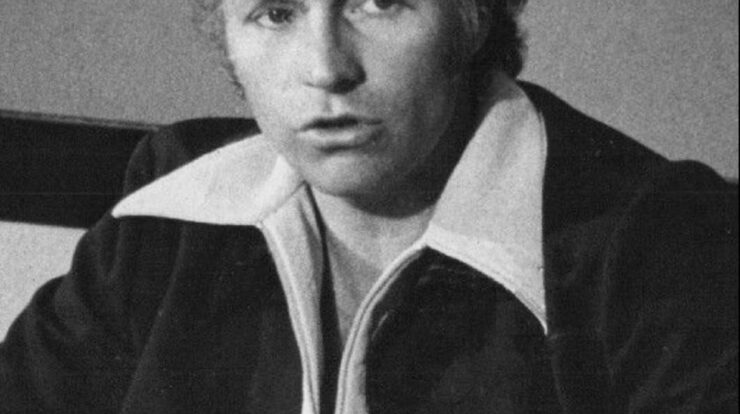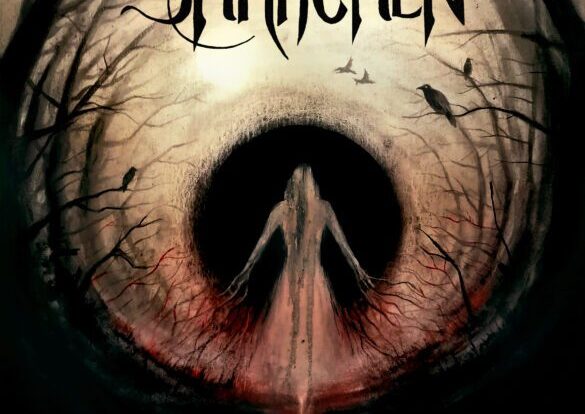
This post was originally published on this site

In sixth grade, I went to a strict Catholic school. When you have an Italian-Irish mother, that’s just part of the deal. The nuns had the look and temperament of the defensive line of the ’70s Oakland Raiders. Corporal punishment was harsh, swift, and plentiful–particularly toward boys—and we all feared them. All but one second grader. I can’t remember his first name; nobody used it, because his last name was Knievel. His uncle was Evel Knievel, the greatest and perhaps only celebrity ever to come from my home state, Montana. On the playground, we would watch in awe as this wild Knievel kid raced by us, nuns chasing in an awkward, sluggish pursuit as he knocked kids over, dust, books, and gravel flying behind his path of terror. This kid was fearless. It was truly inspiring to watch.
I hadn’t thought about my schoolmate for decades, until recently, when I saw Dave Chappelle talking about a terrible show he had in Detroit where the audience rebelled against him and began chanting, “We want our money back. We want our money back.” Chappelle told the angry mob: “Good people of Detroit. Hear me now. You are never getting your f*****g money back. I’m like Evel Knievel. I get paid for the attempt. I didn’t promise this shit would be good.”
Good art is a gamble. Look at Picasso. In 1907, he spent nearly a year drawing rough sketches and eventually painting his jagged, raw, unpretty Les Demoiselles d’Avignon. Picasso kept Les Demoiselles d’Avignon in his Montmartre, Paris, studio for years after its completion due to the mostly negative reaction of his immediate circle of friends and colleagues. After its first public showing in 1916, critics were hostile. Today, the painting is hailed as a pivotal moment in art history—the first true work of both Cubism and modern art. Many argue that the 20th century began culturally in 1907, with this painting that today hangs in the Museum of Modern Art in New York. Picasso wasn’t paid to make folks comfy; he got bank for shoving boundaries.
Similarly, I remember my sister and I watching a clip of Hendrix’s feedback-drenched “Star-Spangled Banner” at Woodstock. I couldn’t really process it at the time, but I knew I was watching something that had never been done. When he got to the “bombs bursting in air” part, it sounded like a barrage of explosions. Then, he references the mournful military bugle call “Taps,” played on bases at the end of each day and at funerals. My sister was offended. When I asked why, she said it was “unpatriotic.” I watch it now and I see a Black Army veteran who justifiably had a complex relationship with the country he had served. Martin Luther King was assassinated a year earlier, police brutality toward Black citizens was common. Black Americans were disproportionately stuck in low-wage jobs, and unemployment rates for Black workers were roughly double those of white workers. And although Hendrix was discharged, many of his Army buddies were overseas fighting a war they did not understand or support. So, yes, unpatriotic seems appropriate. But Hendrix’s performance was iconic because he dared to try to show his complex feelings through his guitar.
“That’s the sweet spot: Fearless doesn’t mean flawless.”
Listen to Led Zeppelin’s groundbreaking “Black Dog.” The B section is so wonky, sticking out like a sore thumb with that weird timing that always feels wrong to me, but it would not be the rock masterpiece it is without that unsettling section. Maybe that’s the sweet spot: Fearless doesn’t mean flawless. Thelonious Monk’s janky genius proves that; those off-kilter notes hit you in the gut, not the head. Beck, Bowie, Coltrane… they didn’t polish away the edges; they leaned into them. That’s what makes you feel like a kid at an amusement park, wide-eyed and along for the ride.
When somebody hires me, they get what they get. I want to nail it, but art is subjective, so my idea of what feels right may not jibe with theirs. Humans are not great at communicating, so often I walk away from sessions and gigs wondering if my contribution was good, great, or garbage. But that’s a stupid question I try not to allow myself to indulge. You can’t do great work playing scared. There are times when music is not creative, just painting by numbers, trying to give the customer what they think they want. I do a lot of that to make a living, but that’s more like being a vending machine spitting out custom orders, not an artist.
Real artists are like that Knievel kid—leaving a trail of chaos, and not apologizing for it. I think artists who do it the best flip the script. Their audience isn’t just a judge, but a co-conspirator in the mess. They’re betting on the artist’s next move, not buying a finished product. They’re paying for the front-row seat to potential, not a flawless show. The paycheck was for the swing, not the home run. If the audience pays for “enjoyment” that turns artists into jukeboxes, not creators… if artists aren’t free to fail… innovation dies.





